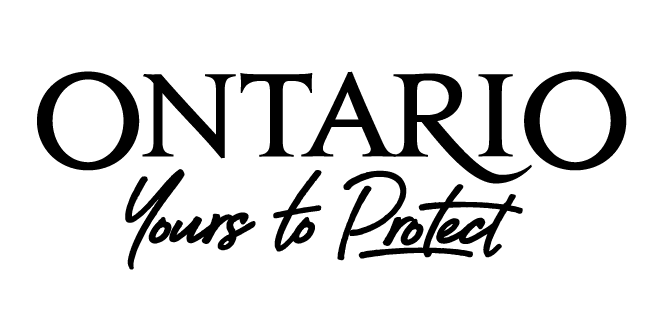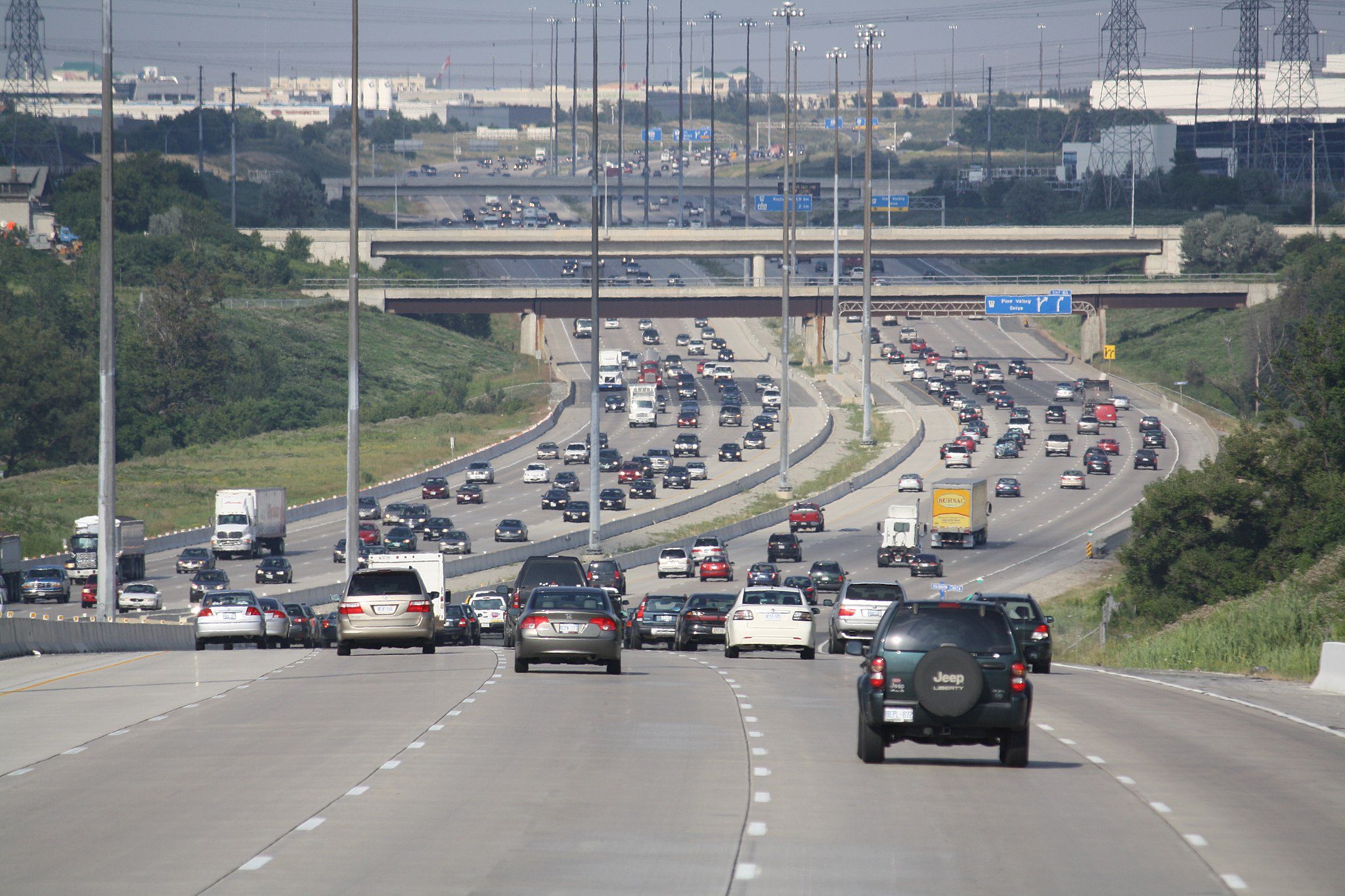The Ontario government is trying to bring two massive 400-series highway projects back from the dead in the GTA. To add insult to injury, they plan to exempt both projects from proper environmental approvals, jeopardizing farmland, forests, species-at-risk, water and air quality, a safe climate, and people’s homes.
Take Action: Tell the federal government to step in and conduct proper environmental assessments for two Ontario mega-highways
Highway 413 and the Holland Marsh Highway are proposed for locations west and north of Toronto. Both projects will have devastating impacts on the environment, and will increase greenhouse gas emissions from transportation by putting more cars on the road. Both were previously shelved after significant opposition, and because they wouldn’t be needed if Ontario followed its own plans for sustainable growth.
Shortly after the last provincial election, the government revived these projects. And then, the Province quietly proposed weakening environmental assessments (EAs) for both projects in August, while Ontarians were fixated on the pandemic. This would be a reckless and irresponsible move. Projects of this scale need a thorough EA to catch threats to our drinking water, species-at-risk, watersheds, and to properly consult First Nations on impacts to their territories and cultural heritage.
If the Province isn’t going to take these impacts seriously, we need the federal government to step in. Many of these impacts fall under federal jurisdiction, and building massive highways will also make it harder for Canada to meet its targets to reduce greenhouse gas emissions. That’s why we’re asking the federal government to intervene with more thorough environmental assessment.
Highway 413
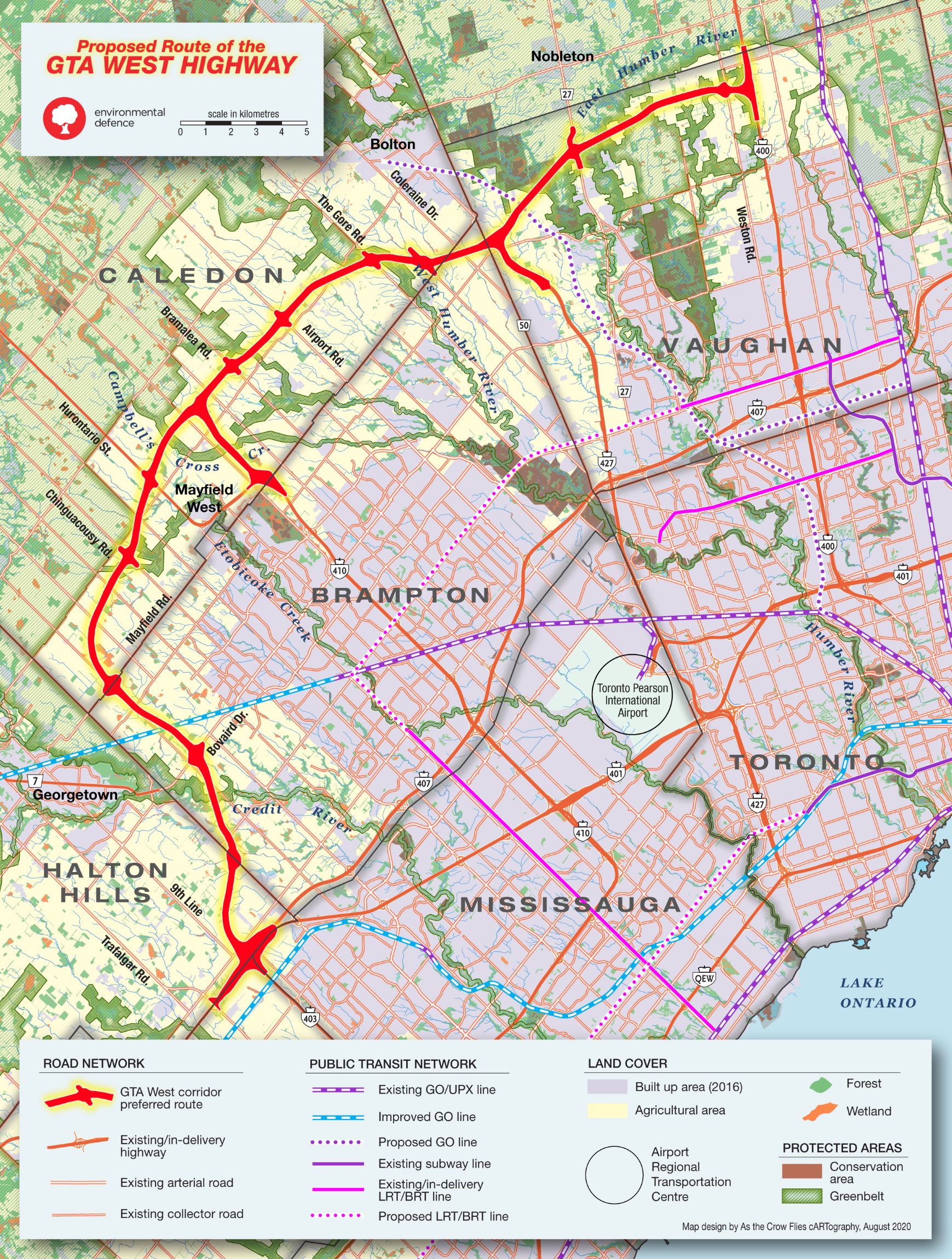
Highway 413 (also known as the GTA West Highway) would stretch from Highway 401, near Milton west of Toronto, up to Highway 400 north of Toronto. It was cancelled by the previous provincial government in spring 2018 after the Province’s own expert panel found it would bring so few benefits to commuters while causing significant environmental damage, that it wasn’t worth the estimated $6 billion price tag. The project was revived later in 2018 by Premier Ford’s government.
Highway 413 would cause significant negative impacts on the environment and on local communities, paving prime farmland including over 400 acres of the Greenbelt in Vaughan. It would do little to ease congestion, and consume billions of dollars that could be better spent on other transportation projects and solutions. You can find more in this report.
The Province’s proposal is to weaken the environmental assessment (EA) process for this highway in order to speed up construction. There are major concerns with this proposal, including an almost unbelievable proposal to start construction on “early works” like bridges over water courses – some of the most destructive elements of the highway – before the EA is even finished.
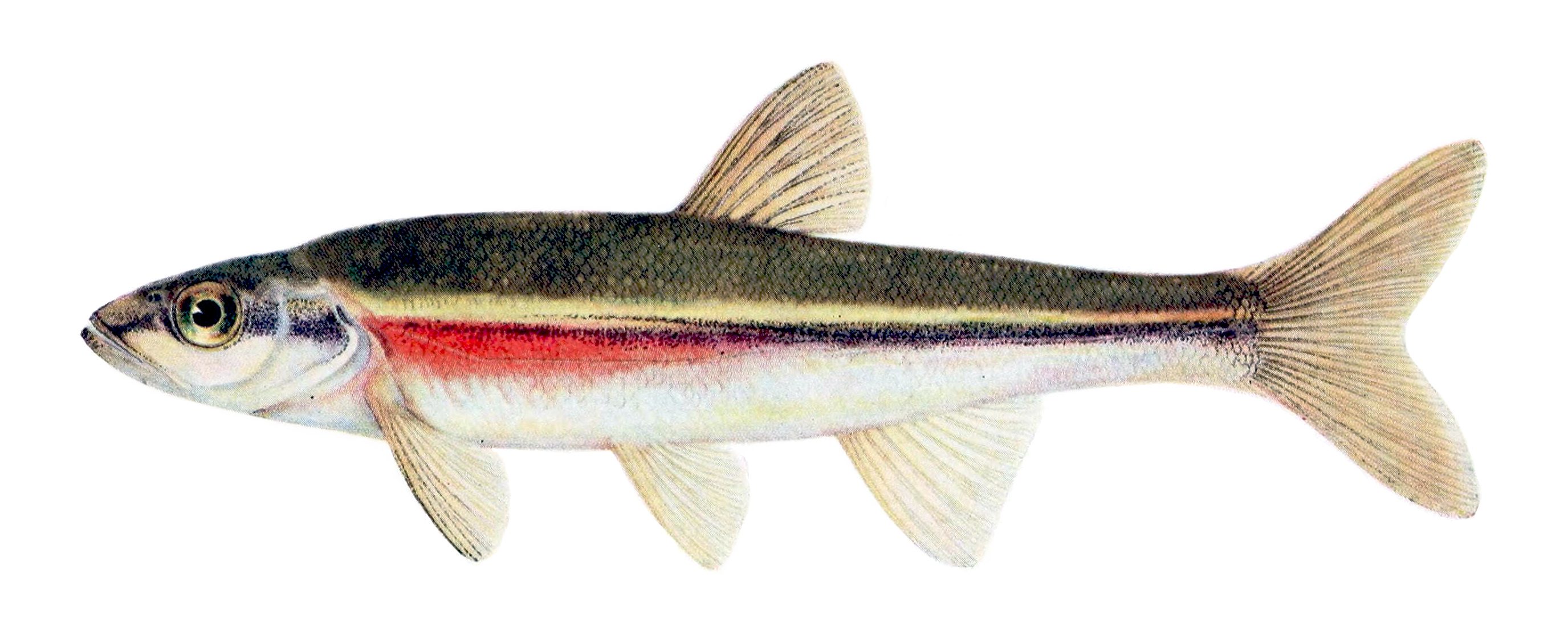
The redside dace, pictured above, is just one of many federally designated species-at-risk which could be devastated by the construction of Highway 413. An estimated 85-100 stream crossings are involved in the preferred route. The highway will also partially or entirely destroy 75 wetlands, 28 of which are designated as provincially significant. These waterways and wetlands support numerous rare plant and animal species, and are critical to the ecological health of the Humber, Etobicoke and Credit River watersheds. The highway would also cross significant woodlands and protected areas like the Nashville Conservation Reserve, and threaten migratory birds. The federal government needs to ensure a proper assessment of these impacts, which fall under their jurisdiction.
The Holland Marsh Highway
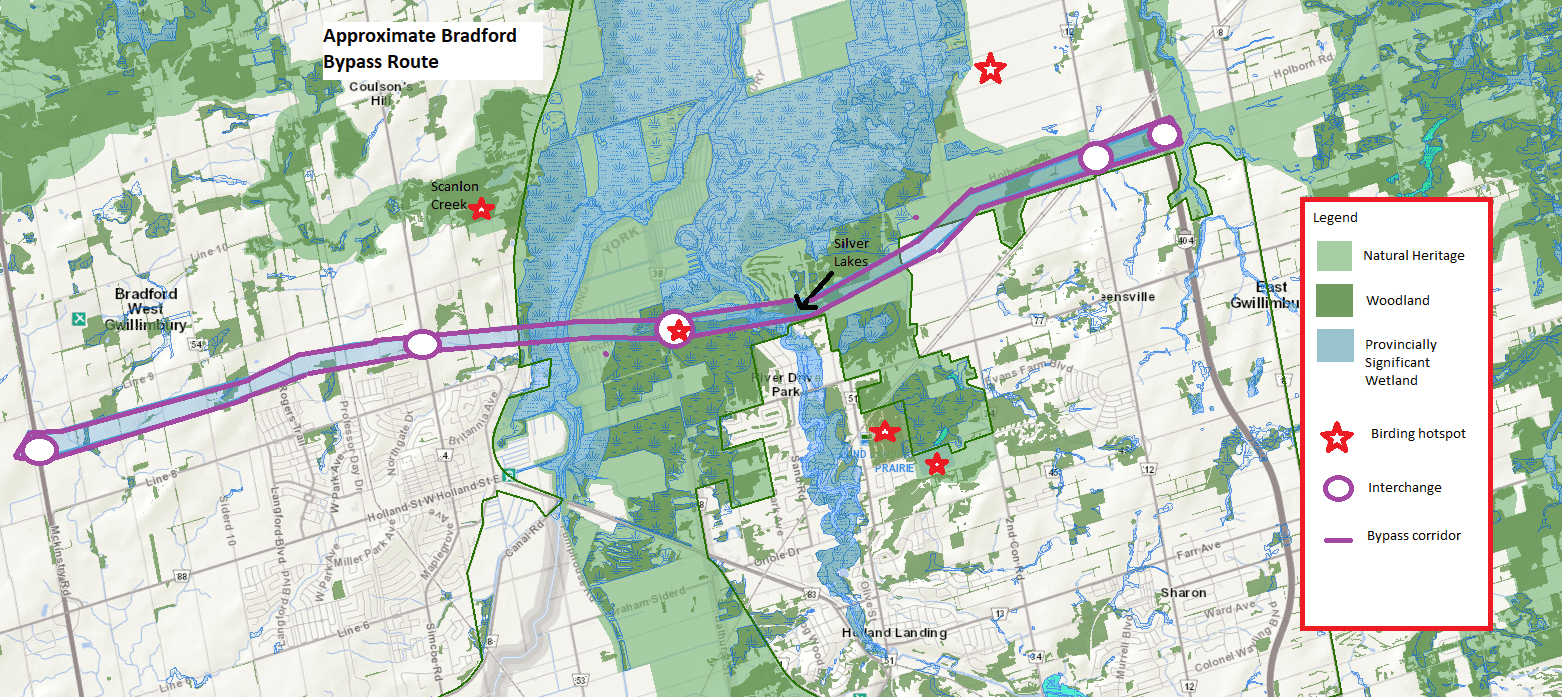
The Holland Marsh Expressway (also known as the Bradford Bypass) is planned for an area north of Toronto in York Region and Simcoe County. It would bulldoze through the Holland Marsh, one of the most significant wetlands in southern Ontario. It’s also one of the most productive specialty crop agricultural areas in the country. The highway would remove 32.7 hectares of significant wildlife habitat, and 9.5 hectares of the provincially significant Holland Marsh wetland complex, which flows north into Lake Simcoe.
Lake Simcoe is well loved and well-used. It is already so stressed by human and urban impacts that Canada’s best watershed-based legislation was designed and put in place in 2008 to help address these impacts. Building a highway through one of the watershed’s most sensitive areas stands in stark contrast to the protections assured by the Lake Simcoe Protection Act and Plan.
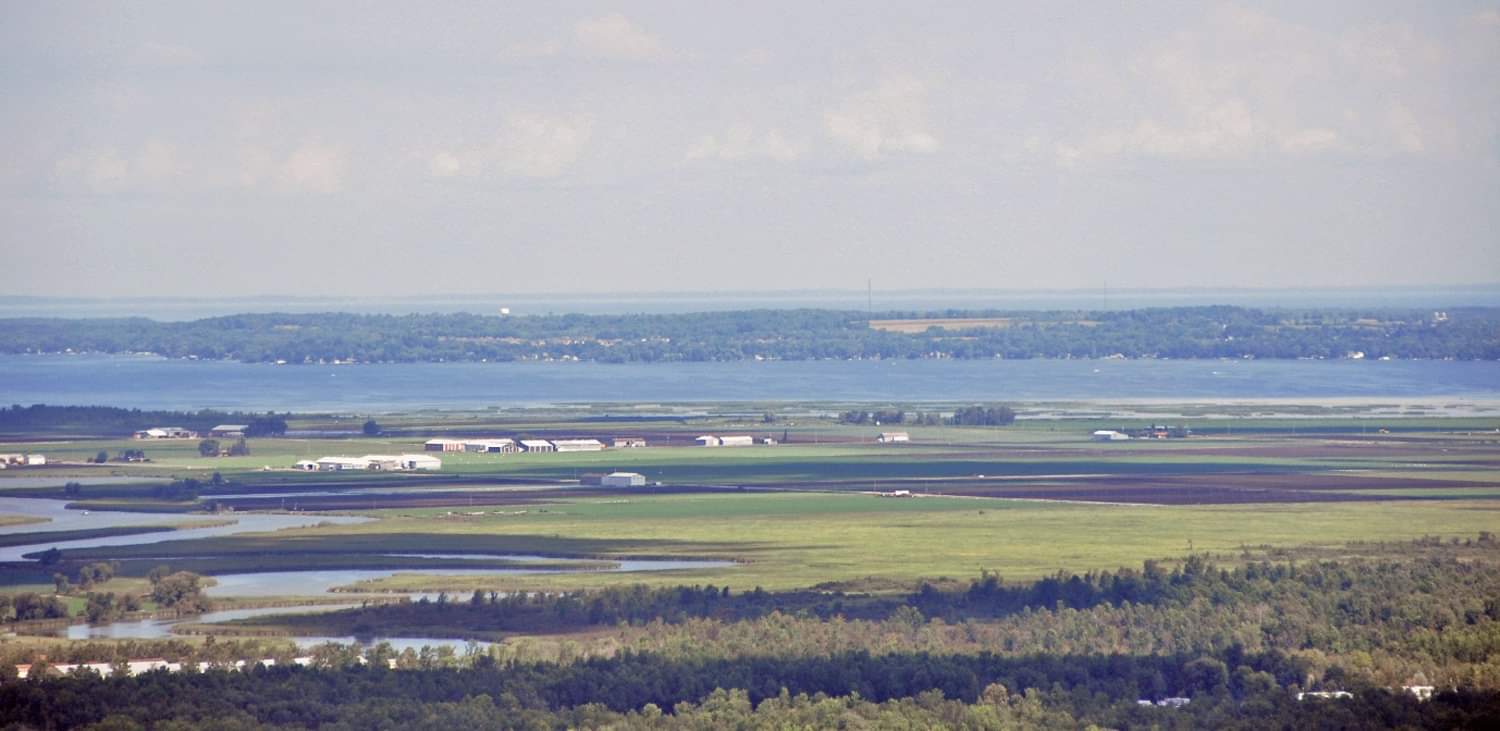
A highly controversial environmental assessment study on the Bradford Bypass was completed 23 years ago. The 1997 EA did not consider cumulative effects, impacts to Lake Simcoe, climate change, or detail the impacts on natural heritage, migratory birds, fisheries, First Nations cultural heritage impacts or air pollution. Still, even this superficial EA concluded that the project would damage fish habitat and cause severe stormwater and potential groundwater contamination impacts. Ontario approved the 1997 EA in 2002, with conditions requiring upgraded studies on archaeological resources, stormwater management, groundwater protection plan, noise, and compliance monitoring.
In July 2020 the Province proposed exempting the Holland Marsh Expressway from all of the above-mentioned conditions, and from completion of any environmental assessment updates, which are required every 5 years by law. If the exemption is approved, there would be no further legally-mandated public consultation or environmental assessment requirements.
In short, the Province wants to move ahead with this project using a 23-year-old EA which never fulfilled its original conditions, does not meet current standards, and has not been updated.. The provincial government’s dangerous, slapdash approach to highway building means the federal government needs to step in to prevent severe, irreversible damage.
The federal government needs to act now
The thousands of people who have already emailed or called their MPPs to oppose both highways should not be ignored. Many of these people could lose their homes or the green spaces, farmland, and watersheds they rely on. This isn’t just a local concern, either. These regions provide drinking water and food for millions of people in the GTA. Along with the potential for severe environmental harm involving many areas of federal jurisdiction, this level of public concern warrants federal intervention before it’s too late.
Take Action: Tell the federal government to step in and conduct proper environmental assessments for two Ontario mega-highways
Stay up to date on environmental issues – join our email community



